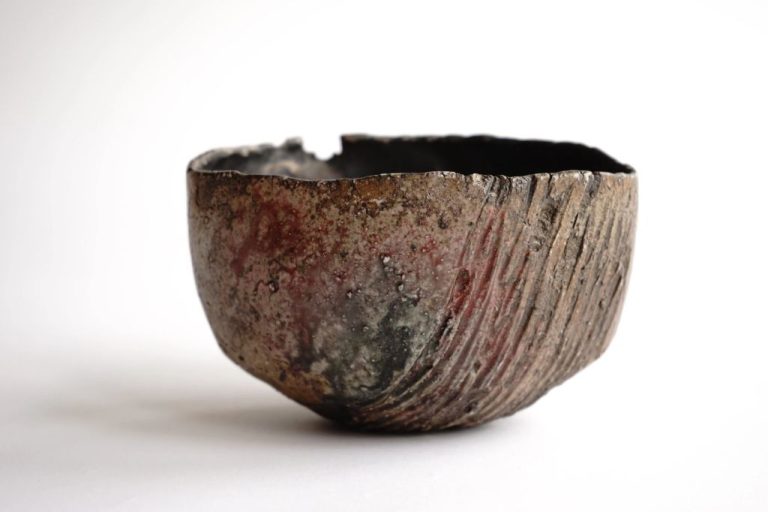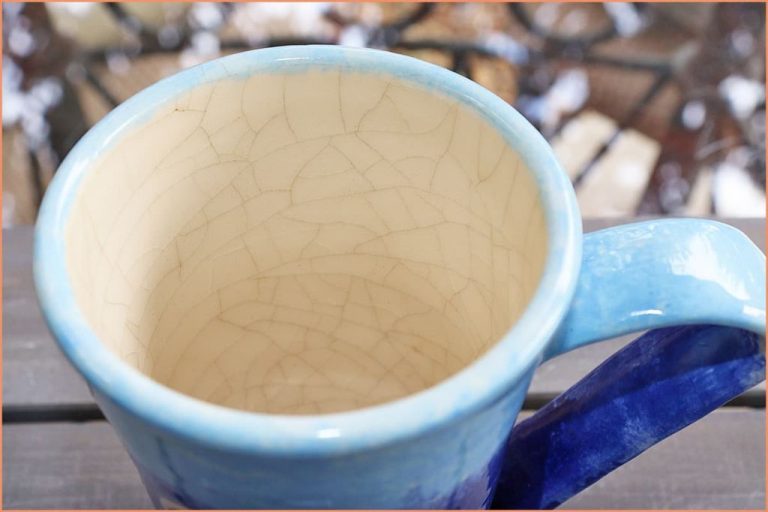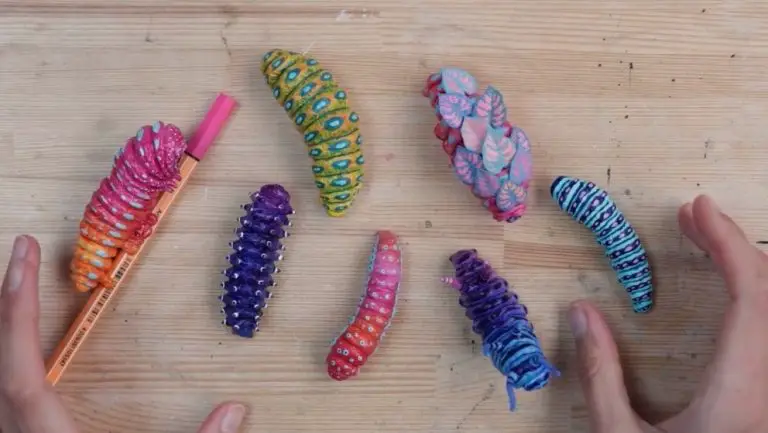What Is A Hake Brush Pottery?
Hake brush pottery, also known as hakeme, refers to a style of decorative brushwork applied to pottery. The technique involves painting fine lines and decorative patterns on leather-hard clay using a brush with stiff hog bristles known as a “hake” or “hakeme” brush. This produces characteristic incised-like designs on the surface of the clay. Hake brush pottery originated in East Asia, particularly China and Japan, where it was an important ceramic decoration technique. It emerged in the prehistoric Jōmon period of Japan (14,000–300 BCE), but became especially prominent during the Yayoi period (300 BCE – 300 CE). In China, hakeme brushwork was used on pottery as early as the Neolithic period, and continued to be widely practiced into the Tang dynasty (618–907 CE).
Origins
Hake brush pottery originated in East Asia, specifically China and Japan, dating back to the Neolithic period around 10,000 BCE. The earliest known examples of hake brush pottery were found at the Jomon sites in Japan. Hake brushes were used to create the characteristic cord-marked pottery of the Jomon period, made by pressing rope into the wet clay.
In China, some of the earliest intact examples of pottery made with hake brushes date back to the Yangshao culture in the Yellow River Valley around 5000-3000 BCE. Different styles of combing, brushing, and painting wet clay to create decorative effects evolved over the centuries in both Japan and China. Hake brushes continue to be used today in traditional Japanese and Chinese pottery.
References:
https://www.baileypottery.com/store-dept-pottery-ceramic-tools/store-brushes/store-brushes-hake.html
https://kruegerpottery.com/products/l788_group
Characteristics
Hake brush pottery is distinguished by its unique shape, thin walls, and painted decoration using a hake brush. The pottery dates back to as early as the late Neolithic period in Japan. It is made from high-fired stoneware clay and has a smooth, porcelain-like surface.
Typical shapes include widemouthed jars, bowls, and dish-like vessels often with a flared rim. The walls of hake brush pottery tend to be very thin, giving an light and refined quality to the ware. Many examples feature geometric or abstract designs painted freely in iron pigments using a soft-bristled hake brush.
The hake brush has an oval, fan-shaped bundle of fine bristles set into a flat bamboo handle. It can produce a variety of painted effects from broad washes to delicate lines. Hake brush decoration often features fluid, asymmetrical designs, drips, and blurred edges reminiscent of Japanese sumi painting.
Other common motifs include plants, animals, waves, and celestial symbols painted in an impressionistic style. More realistic landscape scenes and figurative images were also painted on some fine examples. The hake brush allowed both bold, dynamic designs as well as subtle variations in tone and texture.
Hake brush pottery represents a distinctive Japanese folk craft and artistic tradition. The pottery is admired for its thin, lightweight forms and expressively painted designs applying the unique possibilities of the hake brush.
Manufacturing Process
Hake brush pottery is made using a unique multi-step process that involves both wheel throwing and handbuilding techniques. Here is an overview of how hake brush pots are typically made:
1. The potter starts by throwing a basic rounded vessel on the potter’s wheel. This forms the bottom and main body of the pot.
2. Next, soft slabs of clay are added by hand to build up the sides and create texture. The slabs are gently “feathered” and smoothed onto the thrown base.
3. Once the form is built up, the potter uses various metal rib tools to add vertical line indentations and drag marks across the entire surface. This creates a ridged, lined texture.
4. A metal fettling knife is then used to trim excess clay from the base and refine the shape. Sponges and rags help clean up the surface.
5. When the clay has hardened to a leather-hard state, a hake brush is used to accentuate the texture. The brush is swept across the surface to create brush stroke lines.
6. The pot is then allowed to dry completely before the first bisque firing. Multiple layers of colored glazes are applied on the raw bisque surface using hake brushes. The pot is then fired again at a high temperature to melt and fuse the glazes.
7. Finally, the finished hake brush pottery can be polished or given additional surface treatments depending on the desired look. Sanding and distressing may be done to expose the clay color underneath the glaze.
Proper timing, clay consistency, and skilled use of the specialized hake brushes are key to achieving the characteristic surface decoration of hake brush pottery. It is an exacting process that takes much practice to master.
Styles and Variations
Hake brushes have been used for centuries in Asian pottery, particularly in China and Japan. Over time, distinct regional styles and variations of hake brushes emerged.
In China, hake brushes tend to have larger, flatter bristle heads compared to Japanese hake brushes. The bristles are typically softer and less dense. Chinese hake brushes are well-suited for applying slip and glazes over large surface areas.[1]
Japanese hake brushes are known for their delicate, precise bristles. The bristle heads are smaller in size but denser. This allows for detailed, intricate brushwork. Japanese hake brushes are ideal for techniques like mishima where fine lines are incised through slip.[2]
In addition to the Chinese and Japanese styles, there are also distinct Korean hake brushes. These feature sturdy, stiff bristles well-suited for cleaning and smoothing clay surfaces.
Within each regional style, there can be variations based on the brush size and thickness of the bristles. Artists select hake brushes based on the needs of the technique or the scale of the ceramic piece.
Archaeological Examples
Hake brush pottery has been found at a number of archaeological sites across East Asia, providing insight into the history and evolution of this pottery technique. Some of the best preserved examples come from tombs and burial sites in Japan and Korea from between the 5th and 8th centuries CE.
In particular, intact hake brush vessels have been excavated from ancient tombs such as the Takamatsuzuka Tomb in Japan, dating back to the late 7th or early 8th century CE. These vessels are covered in white slip and feature abstract painterly designs made with iron oxide pigment and characteristic brush strokes (The Metropolitan Museum of Art). The Kitora Tomb in Asuka, Japan contained similar hake brush jars from the 7th century decorated with figurative mythology scenes.
Additional examples were found in the Anapji pond site in Korea, an artificial reservoir and royal garden built in 674 CE. Archaeologists uncovered fragments of white slip jars decorated with plant and geometric motifs using the hake brush technique (Aramco World). These provide insight into the spread of hake brush pottery across ancient East Asia.
Historical Significance
Hake brush pottery has played an important role in the culture and society of East Asia for centuries. The distinctive brush strokes and natural glaze effects achieved with hake brushes are hallmarks of traditional Japanese, Korean, and Chinese pottery styles. According to the video “How I Glaze my Pottery Using the Brushing Technique and a Hake Brush” (source), hake brushes have been used for over 400 years to create unique pottery finishes. They allow artists to control the flow and absorption of glazes.
Historically, hake brushes enabled potters to rapidly produce functional but visually appealing pottery for everyday use. Simplicity and subtlety were prized aesthetic qualities. The hake brush remained a vital pottery tool even as styles evolved over the centuries. It continues to be used today to maintain cultural heritage and handicraft techniques.
Modern Revival
Despite dwindling in popularity over the past century, hake brush pottery has seen renewed interest and practice in recent times. As appreciation has grown for traditional and handmade crafts, many ceramic artists have turned back to this historical technique as a way to connect with the past. Hake brushes lend themselves to creating rustic, earthy surfaces and textures, which align well with the modern aesthetic (BaileyPottery.com).
Today, pottery artists around the world are discovering or re-embracing the distinctive hake brush method. Contemporary pieces showcase the vast creative potential, as artists blend hake brush effects with modern forms, glazes, and decorative styles. Both functional ware and decorative objects are crafted using hake brushes. As interest continues, specialty workshops and classes are available to learn this traditional hand-painting technique. The hake brush allows potters to rapidly decorate surfaces in a flowing, organic manner that can’t be replicated by any other tool. This unique quality keeps it relevant in the modern era.
Notable Potters
Hake brush pottery has been practiced by many skilled potters over the centuries. Some of the most famous include:
Bernard Leach (1887–1979) was an English potter who helped establish the studio pottery movement. He learned Japanese techniques like hake brushing while living in Japan and incorporated them into his pottery when he returned to England. Leach produced simple and functional pottery that emphasized subtlety over ornate decoration.
Shoji Hamada (1894–1978) was a Japanese potter who also studied traditional Japanese pottery and became known for his mastery of natural glazes and textures. Hamada often used hake brushes to create his signature wavy, cracked surfaces.
Lucy Rie (1902-1995) was an Austrian-British studio potter. Rie studied pottery in Vienna before fleeing Nazi persecution and moving to England. She became known for her abstract modernist ceramics. Rie often used hake brushes to apply layers of colored slip.
Warren MacKenzie (1924-2018) was an American potter who apprenticed under Bernard Leach in England. MacKenzie went on to establish his own pottery studio in Minnesota where he created simple, functional stoneware using techniques like hake brushing.
Ron Ranson (b. 1939) is a British painter and printmaker known for his expressive, textured watercolors. Ranson also designs a signature line of hake brushes that are popular among watercolorists and potters today.
Conclusion
In summary, hake brush pottery has a long and rich history in Japanese ceramic arts. The distinct brushwork patterns and bold, rustic style make it easily recognizable and appreciated for its aesthetic qualities. While the origins of this technique can be traced back centuries, hake brush pottery saw its height during the Momoyama period in the 16th century. Master potters like Raku Chōjirō advanced the art and left a legacy still honored today. Though not as common in modern times, traditional hake brush pieces are still created and desired by collectors and art enthusiasts around the world. This pottery style represents an important facet of Japan’s ceramic arts and will likely continue to be practiced by dedicated potters seeking to preserve this age-old tradition.
The rustic beauty and textured surfaces of hake brush pottery showcase the skilled techniques of Japanese ceramic arts. While styles and methods have evolved over time, the handmade qualities continue to give these pieces their distinctive character. As an iconic style cherished for centuries, hake brush pottery remains a hallmark of Japanese culture and artistic expression.



